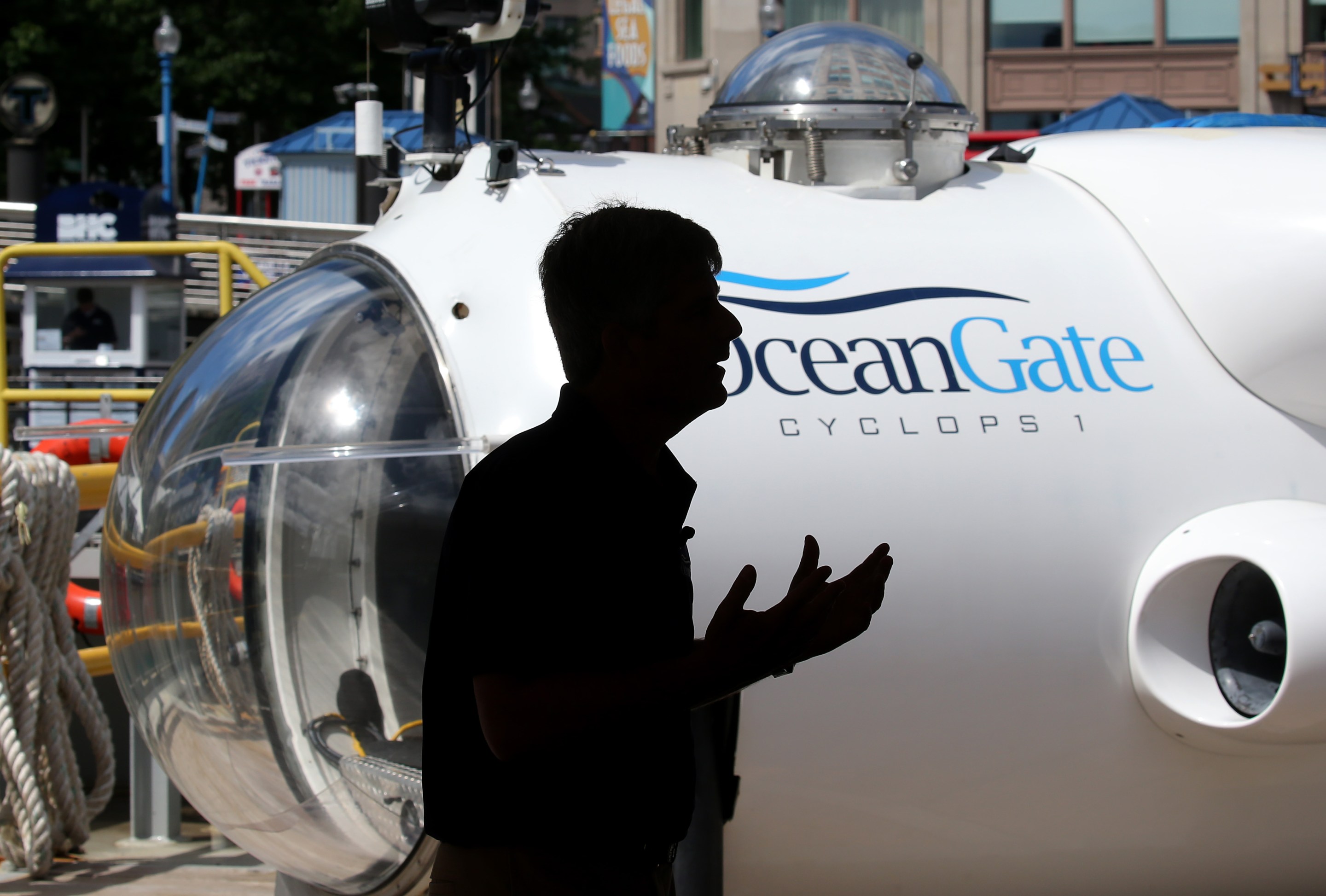It's old hat now that climbing Everest means paying as much as $75,000 to trek past the hundreds of bodies of people who have died attempting to reach the summit—some that even appear alive as the wind blows through their hair. Too expensive or dangerous to retrieve, these human remains linger on the mountain yet do not seem to deter the climbers. Some even became gruesome landmarks, such as the remains of a climber with green boots who died a little over a thousand feet from the top; if you saw Green Boots, you were almost there. If hikers endure the human traffic jams to reach the top of the mountain, they can spend 15 minutes snapping photos at the peak before they must descend. Do any of these bodies make it into rich people's Everest selfies? Do the Sherpas who guide these rich people to the peak, carrying their bags and sometimes dying in the process, make it into these selfies?
Although Everest has gradually and unintentionally become a mass grave, the wreck of the Titanic is one by definition, raising the question of why anyone who is not ostensibly researching the Titanic would want to go there, let alone whether this kind of tourism should even be allowed. The Titanic rests in halves in the midnight zone, 12,400 feet down, where every square inch of surface experiences the equivalent of 5,500 pounds of force, according to Scientific American. It would be safe to descend to such depths in a human-occupied submersible such as Alvin, which is operated by the Woods Hole Oceanographic Institution and has transported more than 3,000 people to various reaches of the deep sea, including the Titanic. Engineers regularly disassemble Alvin for maintenance and upgrades and put the sub through extensive safety and certification tests that OceanGate famously eschewed.
On Thursday the U.S. Coast Guard announced that the five people who paid $250,000 to board the private OceanGate submersible Titan—British businessman Hamish Harding, British-Pakistani businessman Shahzada Dawood and his son Suleman, French explorer Paul-Henri Nargeolet, and OceanGate CEO Stockton Rush—are dead. The Coast Guard discovered fragments of the Titan scattered on the seafloor about 1,600 feet from the bow of the Titanic, indicating there was a catastrophic implosion, a much swifter death than a long suffocation. The sub likely imploded on Sunday, as the Wall Street Journal reported the U.S. Navy detected the sound of an implosion or explosion around the time the Titan lost contact about an hour and 45 minutes into its dive.
Yet for all 96 hours of uncertainty, sites spit out excruciatingly constant coverage of this absurd and terrifying saga, ranging from almost unbelievably insipid "insight" from "experts" ("Titanic sub crew likely experiencing ‘mood swings,’ ex-Navy psychologist says") to a ghoulish "oxygen remaining" countdown clock. Even the singer King Princess, a descendant of Macy's tycoons who died on the Titanic, weighed in on TikTok. The whole saga encapsulates an inevitable outcome of the industry of high-risk luxury tourism: Private companies will cut corners and dodge regulations only to eventually beg for government intervention they once scorned, and that people, some rich and some not, will die.
Extreme tourism is not just an unfathomable waste of resources on a faltering planet, though it is very much that: It is also a feedback loop of class, the elite's attempt at becoming even more elite, without actually exerting any physical or mental effort. In a 2017 press release for OceanGate's first crewed submersible expedition to the wreck of the Titanic, Rush described what he saw as the appeal of such a trip: "Fewer than 200 people have ever visited the wreck, far fewer than have flown to space or climbed Mount Everest," he said. How to set yourself apart from the other ultrawealthy, merely by spending some more money.
Everest, it seems, is no longer high enough to impress, or rather no longer exclusive enough. Recently, the most visible realm of extreme tourism has been space, or the edge of it. Richard Branson's Virgin Galactic and Jeff Bezos's Blue Origin can yeet you to the edge of space for anywhere from just under half a million to $1.25 million, and Elon Musk's SpaceX, which does actually take you into orbit, has charged tourists $55 million apiece. At least climbing Everest, even if you take a private helicopter to the base camp, involves a little walking; flying to the edge of space or descending to the bottom of the sea is a testament only to the scientists and engineers who built the craft that carries you.
The OceanGate website, under an advertisement selling tickets to see "the world's most famous shipwreck," issues a challenge in big block letters: "95% of the Earth’s ocean is unexplored. You can change that." But is seeing the same vista of the most famous, most photographed shipwreck in the world really exploring? When Mike Reiss, a producer and writer on The Simpsons, successfully descended to the wreck in the Titan last year, he thought "Wow, she looks just she does in the pictures," according to the New York Post. The only new photos to be taken here are selfies. These expeditions are not concerned with exploration but with scarcity and exclusion and a dollop of delusion—on selling tickets to people who would rather identify as explorers than as the one percent.
Imagine if any of the millions funneled into extreme tourism were redirected to scientists who depend on grants and scant government funding to actually explore the deep sea—mapping the seafloor with remotely operated vehicles, collecting samples of sediment and seawater, and chronicling the dizzying number of deep-sea species that have yet to be described by science. Some private deep-sea expeditions have offered seats to ocean scientists, such as the wealthy investor Victor Vescovo's Five Deeps expeditions to the deepest points in all five oceans. (Vescovo, too, has been criticized for a "general disregard for safety.") But the overarching project of extreme tourism is not interested in discovery but record-setting at best, and profit at worst.
For Rush, the deep sea was not a site of wonder or the unknown, but a realm of unexploited resources. In a 2017 story in Fast Company (with a kicker that has aged very, very poorly) Rush explained his company's business plan. Sell Titanic tickets to the adventure-seeking rich, expand the expeditions to other extreme deep-sea environments such as hydrothermal vents, etc. He framed all this as establishing a safety record so he could then market to his true target clients: oil and gas companies, which spend billions of dollars a year on deep-sea robots to service their platforms.
Some of the obituaries of the men who died in the Titan assert that the passengers understood "the risk" of the journey. This may be true of those like Rush who knowingly made the decisions to skip over safety concerns, but much less so for the passengers who bought a ticket without an exhaustive knowledge of what safety protocols should be required for a sub like this, to say nothing of the 19-year-old Suleman, who allegedly went on the Titan to please his dad. Who is allowed to choose risk, and who is condemned to it? The hundreds of migrants who died this week after boarding an overloaded fishing trawler in the Mediterranean, in a tragedy of enormous scale that received a fraction of the attention, will not be called explorers. Aren't they?







